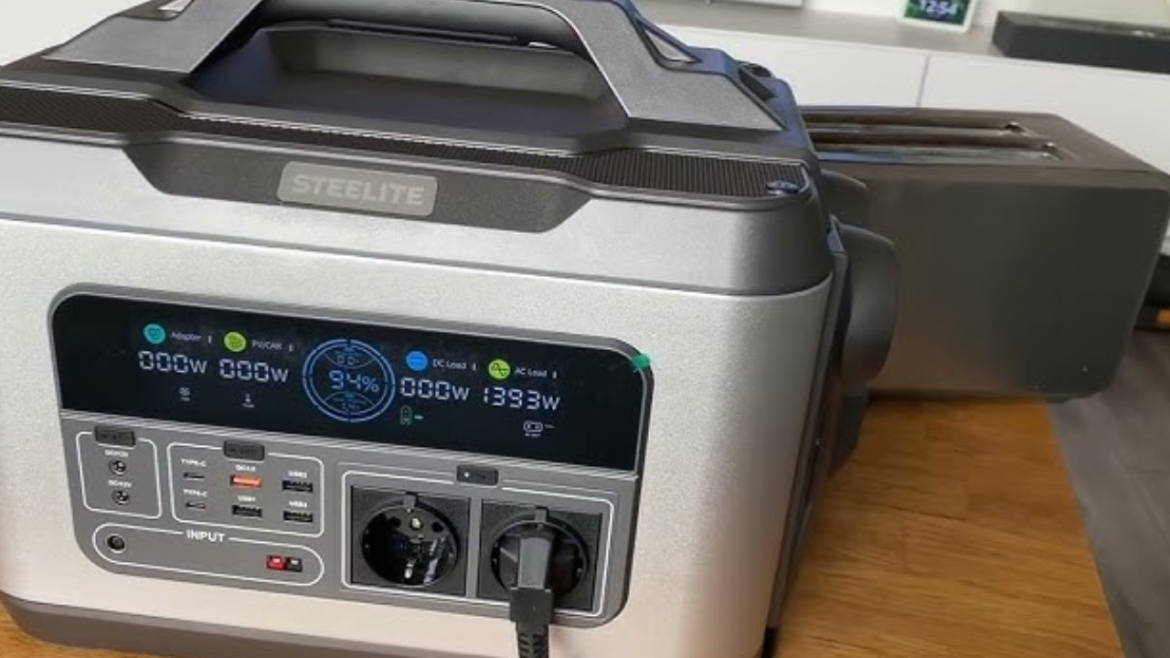A solar generator with panels operates on the principle of photovoltaic conversion, a process that enables the transformation of sunlight into electricity. The system primarily consists of solar panels, which are made up of semiconductor materials like silicon.
A solar generator with panels harnesses sunlight to generate clean and renewable electricity, offering an eco-friendly and sustainable energy solution. When sunlight falls on these panels, it triggers the release of electrons from the atoms within the material.
These freed electrons create an electric current, generating direct current (DC) electricity. However, the electricity produced by the panels is typically in DC form, while most appliances and devices use alternating current (AC).
Principle of a Solar Generator with Panels
The principle of a solar generator with panels is rooted in the photovoltaic effect, where specialized solar panels capture and convert sunlight into usable electricity. These panels consist of semiconductor materials, typically silicon, designed to release electrons when exposed to photons from sunlight.
As photons strike the surface of the panels, they excite electrons, causing them to flow as an electric current. This direct current (DC) electricity can be utilized for various applications. To make it compatible with standard electrical systems, an inverter is employed to convert DC electricity AC (alternating current).
Discuss the various components and System Setup
A solar generator with panels comprises several crucial components that work in harmony to efficiently capture, convert, and utilize solar energy. These components create a well-coordinated system that maximizes the benefits of solar power. Inverter:
Solar Panels
At the heart of the system are solar panels, often made of silicon-based semiconductor materials. These panels contain numerous photovoltaic cells that absorb sunlight’s photons, initiating the photovoltaic effect and generating a flow of electrons – the basis for electricity generation.
Charge Controller
In systems with battery storage, a charge controller manages the charging process. It monitors the battery’s state of charge, preventing overcharging and damage. This helps extend battery life and ensures a consistent energy supply during periods of low sunlight.
Mounting and Racking
Properly positioning solar panels is vital for optimal energy capture. Mounting and racking systems provide structural support and allow panels to be angled for maximum sun exposure, thereby increasing energy production efficiency.
Applications of using a Solar Generator with Panels
Residential Energy Generation
Solar generators are commonly used to power homes, reducing reliance on traditional grid electricity and lowering utility bills. They can be integrated into rooftops or ground-mounted installations.
Remote Locations
Solar generators are invaluable for providing electricity in remote or off-grid areas where establishing traditional power infrastructure is challenging or expensive.
Emergency Power
In times of power outages or natural disasters, solar generators can serve as reliable backup power sources, ensuring essential devices and appliances remain operational.
Commercial and Industrial Use
Businesses can benefit from solar generators by offsetting energy costs and demonstrating environmental responsibility. Industries can also utilize solar power for specific applications.
Mobile Power Solutions
Portable solar generators are utilized for camping trips, outdoor events, and mobile workstations, offering convenient and eco-friendly power on the go.
Agriculture and Pumping
Solar generators can power water pumps in agricultural settings, providing irrigation in remote areas where access to electricity is limited.
Advantages of using a Solar Generator with Panels
Renewable and Clean Energy
Solar generators harness sunlight, a renewable resource, reducing dependence on fossil fuels and minimizing carbon emissions, thus contributing to environmental sustainability.
Minimal Environmental Impact
Solar power is environmentally friendly, producing no air or water pollution during operation, which helps preserve ecosystems and combat climate change.
Scalability
Solar generator systems can be tailored to different energy needs, allowing for system expansion as energy demands grow.
Final Words
In the realm of sustainable energy solutions, the solar generator with panels stands as a beacon of innovation and promise. It embodies the remarkable fusion of science and technology, capturing the sun’s abundant energy and converting it into usable electricity. These systems, built upon the principles of the photovoltaic effect, epitomize the power of human ingenuity to harness nature’s gifts. Solar generators with panels offer a multitude of benefits that resonate on both individual and global scales.

